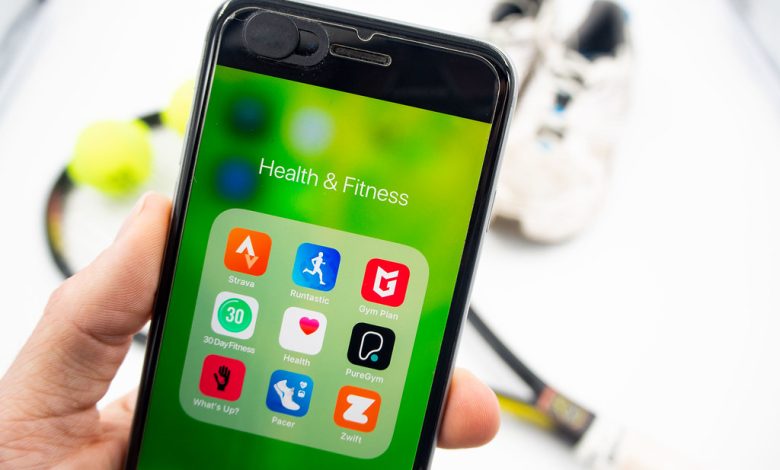Strapping on Success: Wearable Integration in Fitness Apps and Its Impact

In the age of technology, the marriage of fitness and innovation has given rise to an incredible transformation in the way we approach health and well-being. Wearable devices, such as smartwatches, fitness trackers, and heart rate monitors, have become integral companions for fitness enthusiasts, providing real-time insights and data about their physical activities. But the story doesn’t end there; the integration of these wearables with fitness apps has ushered in a new era of personalized fitness experiences that are shaping how we exercise, track progress, and achieve our goals. In this article, we’ll delve into the world of wearable integration in fitness apps, exploring its impact on individuals, the fitness industry, and the future of staying active.
The Wearable Revolution: Beyond Counting Steps
Wearable devices have evolved far beyond their initial function of counting steps. Today’s wearables boast an impressive array of features, including heart rate monitoring, sleep tracking, GPS tracking, pulse oximetry, and even ECG capabilities. These devices are no longer mere accessories; they’ve become powerful tools that empower users to monitor their health and fitness with unprecedented precision.
The Role of Fitness Apps in Wearable Integration
Fitness apps have taken the capabilities of wearables a step further by seamlessly integrating with these devices to provide a holistic fitness experience. This integration enhances the value of wearables by offering users a comprehensive platform to interpret and utilize the data collected by their devices. Here’s how wearable integration in fitness apps is making a significant impact:
1. Real-Time Data Analysis
Fitness apps that integrate with wearables offer real-time data analysis, allowing users to access immediate insights into their workouts, heart rate, calories burned, and more. This instant feedback guides users in optimizing their exercise routines and making informed decisions about their training intensity.
2. Progress Tracking
Integration with fitness apps enhances progress tracking by centralizing data from wearables, creating a comprehensive record of a user’s fitness journey. Whether it’s distance run, steps taken, or heart rate trends, wearables feed valuable information to fitness apps that users can review and analyze over time.
3. Customized Workouts
Wearable integration enables fitness apps to create personalized workout plans based on data collected by wearables. For instance, a heart rate monitor can help tailor workouts to the user’s heart rate zones, ensuring effective training that aligns with their goals.
4. Goal Setting and Achievement
Fitness apps and wearables work together to set and monitor fitness goals. Users can input their objectives, such as distance, calories burned, or active minutes, and track their progress toward achieving them. This dynamic feedback loop motivates users to stay on track and celebrate their accomplishments.
5. Recovery and Well-Being
Wearables that track sleep patterns, stress levels, and recovery metrics can feed data to fitness apps that offer insights into overall well-being. These insights can guide users in managing stress, prioritizing recovery, and making lifestyle adjustments to optimize their health.
6. Social Engagement
Many fitness apps encourage social engagement by allowing users to connect with friends, share progress, and participate in challenges. Integrating wearable data into these interactions fosters a sense of community and healthy competition, motivating users to stay active and engaged.
The Impact on Individual Fitness Journeys
The integration of wearables and fitness apps has a profound impact on individual fitness journeys:
1. Enhanced Motivation: Real-time data and progress tracking keep users engaged and motivated, as they can visually witness their improvements over time.
2. Personalization: Wearable integration allows fitness apps to create personalized plans that cater to users’ unique needs, goals, and physical capacities.
3. Accountability: The interplay between wearables and fitness apps establishes a sense of accountability, as users receive feedback on their efforts and can adjust their routines accordingly.
4. Informed Decision-Making: Wearable data empowers users to make informed decisions about their workouts, such as modifying intensity or changing exercise types.
5. Long-Term Sustainability: The comprehensive overview of data collected by wearables and interpreted by fitness apps encourages long-term commitment and sustainable fitness practices.
The Industry Impact
The integration of wearables and fitness apps doesn’t just impact individual users; it’s also transforming the fitness industry as a whole:
1. Digital Accessibility: The combination of wearables and fitness apps democratizes access to high-quality fitness tracking and guidance, making health and fitness resources more accessible to a global audience.
2. Remote Coaching: Fitness professionals can leverage wearable data to offer remote coaching and personalized training plans that cater to clients’ individual metrics and goals.
3. Data-Driven Insights: The vast amount of data collected by wearables and analyzed by fitness apps offers insights into exercise trends, user behaviors, and overall health statistics that can inform fitness industry strategies.
4. Gamification and Engagement: Wearable integration allows fitness apps to introduce gamification elements that increase user engagement, such as challenges, rewards, and virtual competitions.
5. Research Opportunities: The aggregate data collected from wearables and fitness apps presents research opportunities for health scientists and researchers interested in understanding exercise patterns and their effects on health outcomes.
The Future of Wearable Integration
As technology continues to evolve, the potential for wearable integration in fitness apps is limitless:
1. AI-Enhanced Analysis: AI could analyze wearable data to offer more nuanced insights and provide recommendations for optimizing workouts, recovery, and nutrition.
2. Enhanced Biometrics: Wearables could incorporate even more advanced biometric measurements, such as blood glucose levels, hydration status, and muscle oxygenation.
3. Virtual Coaching: AI-powered virtual coaches could provide real-time guidance and form correction based on data from wearables, enhancing the remote coaching experience.
4. Health Insights: Wearable integration could extend beyond fitness to offer insights into broader health indicators, such as stress, hydration, and overall well-being.
In Conclusion
The integration of wearables in fitness apps is revolutionizing how we approach health and fitness. These apps are transforming wearable devices from passive data collectors into active partners that guide, motivate, and personalize our fitness journeys. The synergy between wearables and fitness apps is empowering individuals to take charge of their well-being, make informed decisions, and achieve their fitness goals with unparalleled precision and support. As technology continues to advance, the relationship between wearables and fitness apps is bound to become even more symbiotic, offering an ever-expanding realm of possibilities for enhancing our physical and mental health. Whether you’re tracking your heart rate during a high-intensity workout, analyzing your sleep patterns for better recovery, or receiving real-time feedback on your performance, the wearable integration in fitness apps is a powerful tool that’s strapping you on the path to success in your health and fitness journey.




